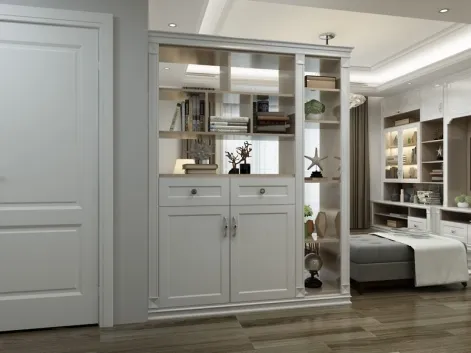Ever notice how a great console cabinet isn't just furniture? It's that piece where you toss your keys after work, display vacation memories, or hide gaming controllers before guests arrive. In Japan, where form meets function in everyday life, console cabinets blend practicality with art. These manufacturers get it - they know good design shouldn't shout, it should whisper "everything has its place" while making your space feel complete.
Let's explore 10 Japanese brands that transform ordinary storage into living art. You'll notice common threads: wood that feels warmer than plastic ever could, joins so precise they seem to disappear, and proportions that somehow fit perfectly anywhere. Whether you're furnishing a tiny Tokyo apartment or a spacious Kyoto home, there's craftsmanship here that turns furniture into heirlooms.
1. Tendo Mokko
HQ: Yamagata Prefecture
Materials: Sustainable Hardwoods
Price Range: $$$$
Step into any Tendo Mokko showroom and you'll feel it immediately - their pieces have soul. They pioneered Japan's bentwood technique where steam transforms rigid wood into fluid curves that hug walls naturally. Unlike flat-pack furniture, these console cabinets age gracefully; scratches become character marks, not flaws.
Perfect for: Heritage homes seeking warmth through contemporary pieces. Their slim console designs nestle into genkan entrances beautifully without blocking passages.
2. Karimoku New Standard
HQ: Aichi Prefecture
Materials: Japanese Oak/Walnut
Price Range: $$$
Karimoku took centuries of woodworking knowledge and made it casually cool. Their consoles look simple at first glance - then you notice the subtle chamfered edges or how the grain matches across multiple drawers.
The magic? They designed "building block" systems. Start with a console cabinet, later add matching bookshelves or media units. Everything clicks together with tool-free connectors - no more mismatched furniture. Their Smoke Oak finish has become iconic, hiding fingerprints while developing a rich patina.
3. Conde House
HQ: Hokkaido
Materials: Hokkaido Ash/Oak
Price Range: $$$$
Conde House furniture feels like it grew in the forest rather than being built. Their craftspeople source wood where winter toughens the grain, creating console cabinets with a quiet sturdiness. Look closely at corners - you'll spot intricate kigumi joints instead of nails or glue.
These pieces reward patience: the Shinsakuto collection ages like whisky, slowly shifting from pale ash to honey-gold tones. Their design team often incorporates recessed metal detailing - thin brass inlays on drawer faces create light-catching lines.
4. Maruni
HQ: Hiroshima
Materials: Plywood/Hardwood
Price Range: $$
You've likely seen Maruni designs without realizing it - their Tama console sits in hotels, galleries and homes globally. They mastered industrial processes without losing warmth. Thin-walled ash plywood gets shaped into curves that feel sculptural yet affordable.
Smart details make everyday better: consoles include back panels with discreet notches for cords, and reversible drawers that convert to open shelving. Their "wood-blend" technique alternates veneer directions - prevents warping in humid Japanese summers.
5. Time & Style
HQ: Tokyo
Materials: Wood/Ceramic/Metal
Price Range: $$$$
Time & Style consoles feel curated, not manufactured. Founder Yoshiaki Motogi obsesses over material dialogues - picture walnut drawers meeting ceramic tile tops or woven-cane cabinet doors. Their "Edition" pieces feature limited-run collaborations with artisans.
Perfect for collectors: consoles become display stages with integrated lighting slots for pottery or glassware. The low "Chabudai" series references traditional tea tables but includes discreet USB ports.
6. Ariake
HQ: Tokushima
Materials: Domestic Woods
Price Range: $$$$
Ariake builds relationships between designer and craftsperson into every piece. Their designers sketch concepts, then local artisans determine joinery methods - leading to console cabinets where mechanics become aesthetics.
You'll notice thoughtful variations: rather than uniform coloring, some consoles highlight natural wood differences. One side may show wild grain patterns while the other presents smooth uniformity - celebrates each tree's uniqueness.
7. Naguri Kogeisha
HQ: Saitama Prefecture
Materials: Japanese Cypress
Price Range: $$$$
Naguri’s cabinets look like they’ve been kissed by rainfall. Artisans hand-chisel hinoki cypress using century-old tools - the process reveals organic patterns hiding beneath smooth surfaces.
More than looks: this texturing helps mask scratches and creates micro-shadows that play with light throughout the day. Their compact console designs maximize small spaces - many include fold-out extensions that disappear when not needed.
8. Sfera
HQ: Osaka
Materials: Recycled/Reclaimed Wood
Price Range: $$$
Sfera proves eco-friendly can mean stylish. Their consoles incorporate wood salvaged from demolished Kyoto townhouses and temple renovations - you'll find history in every knot and nail hole.
Engineered for city life: ultra-skinny designs fit hallway niches, while castor wheels convert consoles into mobile kitchen islands during gatherings. Their signature "patchwork" tops blend wood remnants into geometric puzzles.
9. Driade
HQ: Yokohama
Materials: Mixed Media
Price Range: $$$$
Forget the term "console cabinet" - Driade creates functional sculptures. Picture asymmetrical silhouettes balancing on single legs or mixed materials like concrete and timber coexisting.
Their collaborations with architects yield unusual solutions: one console hides charging stations behind magnetic rock panels. Another transforms from minimalist shelf to full-height storage by pulling vertical slats upward.
10. Nemu Furniture
HQ: Fukuoka
Materials: Ash/Beech Plywood
Price Range: $$
Nemu understands furniture needs to adapt as lives change. Their console cabinets serve as starter modules - connect additional units sideways or stack upward as needed.
Clever customization: magnetic panels convert doors to open shelving; pull-out trays create laptop stations that vanish when guests arrive. All hardware is standardized meaning replacement parts remain accessible for decades.













